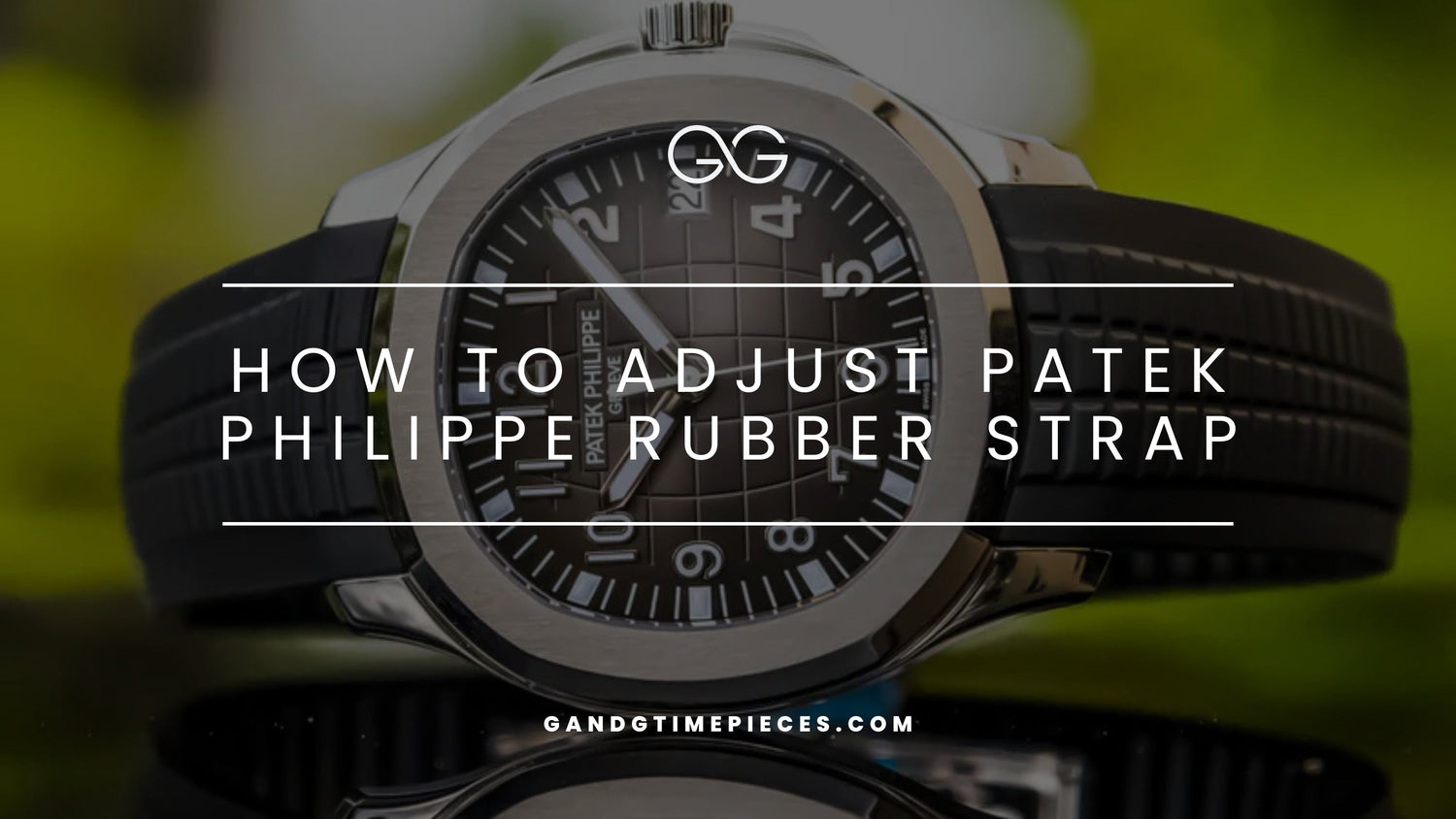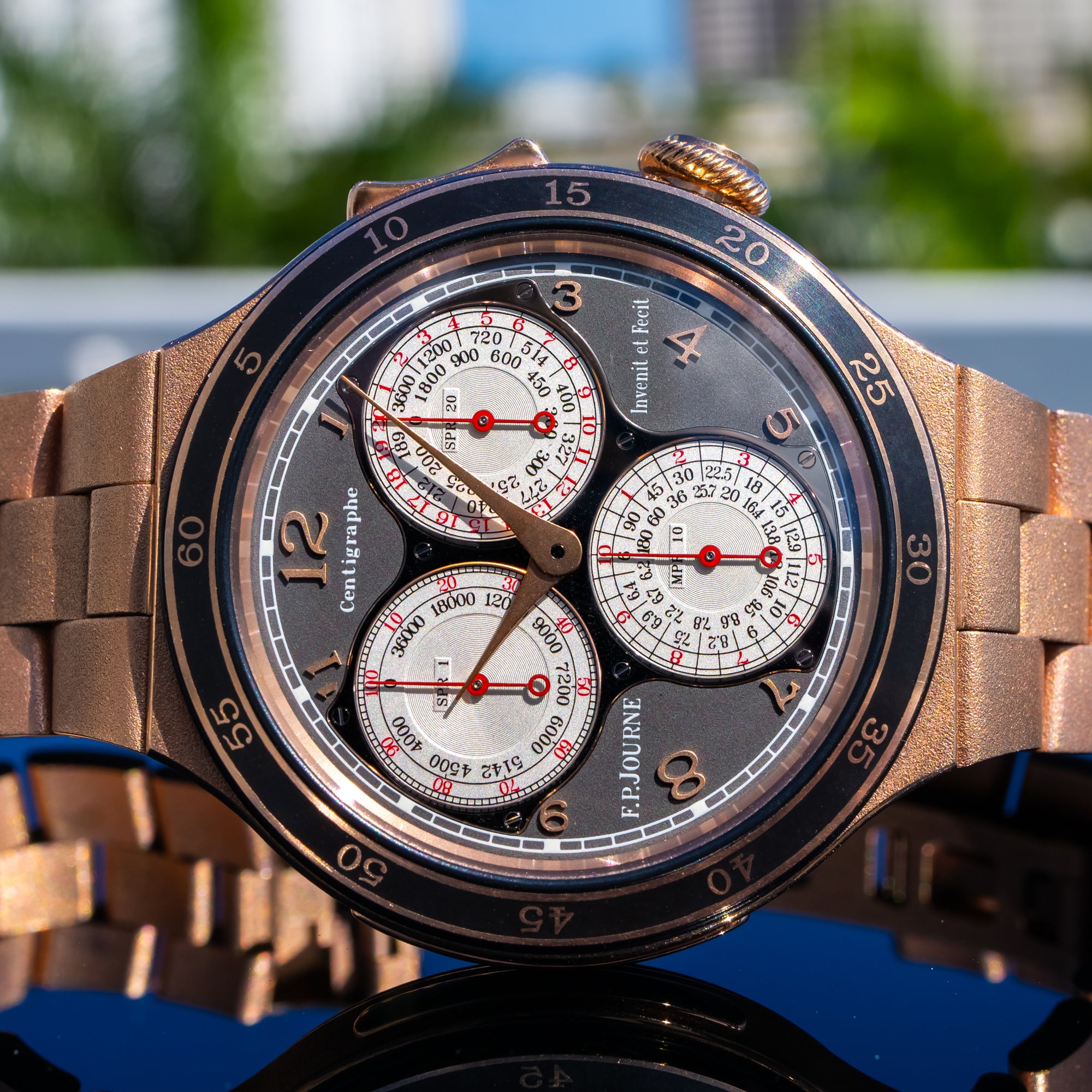Need to adjust your Patek Philippe rubber strap? This guide provides clear, step-by-step instructions on how to adjust Patek Philippe rubber strap properly. Learn about the tools required and the precise actions to take for the perfect fit, all without risking damage to your watch.
Key Takeaways
-
Patek Philippe rubber straps are made from durable FKM rubber, offering comfort and style suitable for any occasion.
-
Adjusting the strap requires specific tools like a spring bar tool and scissors, along with careful measurement of wrist size for a perfect fit.
-
Regular cleaning and timely replacements will keep your Patek Philippe strap in great shape.
Understanding Patek Philippe Rubber Straps
Patek Philippe rubber straps are a marvel of modern engineering, crafted for both functionality and elegance. Made of FKM vulcanized rubber, these straps offer enhanced longevity and performance, making them a reliable choice for daily wear. FKM rubber is renowned for its multiple benefits, including being waterproof, anti-UV, anti-dust, and anti-allergic, ensuring that your watch remains pristine and comfortable under various conditions.
These rubber straps are compatible with specific models like the Aquanaut 5164 and Aquanaut 5167 series, which means you can enjoy the flexibility of switching between different strap materials and designs as per your preference. Whether you opt for rubber, leather, or metal, Patek Philippe ensures that each material complements the watch face and case, offering an interchangeable option that suits any occasion.
The unique blend of durability, comfort, and style of Patek Philippe rubber straps sets them apart from other watches. They are designed to withstand the rigors of daily use while maintaining a sophisticated appearance. This perfect balance makes them an excellent choice for both casual and formal settings, allowing you to wear your Patek Philippe watches with confidence every day.
Tools Needed for Adjusting the Strap
Adjusting a Patek Philippe rubber strap requires a few essential tools. The most important tool you’ll need is a spring bar tool, which is designed to safely compress and release the spring bars from the watch lugs. This tool is indispensable for removing and reinstalling the strap without damaging your watch.
In addition to the spring bar tool, you’ll need a pair of scissors to cut the rubber strap to the desired length. Scissors allow for precise cutting along the designated lines on the strap, ensuring a clean and accurate adjustment. Having these tools on hand will make the adjustment process straightforward and safe, allowing you to achieve the perfect fit for your watch strap.
Step-by-Step Guide to Adjusting the Rubber Strap
Now that you have the necessary tools, it’s time to dive into the adjustment process. Adjusting a Patek Philippe rubber strap involves several steps, from measuring your wrist size to reinstalling the spring bars.
Let’s break it down into manageable parts to ensure you can follow along with one link ease.
Measuring Your Wrist Size
The first step in adjusting your rubber strap is to measure your wrist size accurately. This ensures that the strap fits comfortably without being too tight or too loose. To measure your wrist size, wrap a flexible measuring tape around your wrist, noting where the tape overlaps. If you don’t have a measuring tape, a piece of string can work just as well; simply wrap it around your wrist and then measure the length of the string with a ruler.
Accurate measurement is crucial because it avoids the guesswork and ensures a perfect fit. Remember, a small wrist may require trimming more of the strap, while larger wrists need less cutting. Taking the time to measure correctly will save you from potential discomfort and the hassle of readjusting later.
Removing the Spring Bars
With your wrist size measured, the next step is to remove the spring bars. Using a spring bar tool, locate the spring bars on your watch and press down on them to release them from the watch case. This tool is specifically designed to safely compress the spring bars, making their removal straightforward and damage-free.
Gently press in the ends with the spring bar tool to release them from the watch case. Be careful and take your time with this step to avoid scratching the watch case or damaging the spring bars.
Once removed, set the spring bars aside in a safe place as you’ll need them again for reinstallation.
Cutting the Rubber Strap
Now comes the part where you adjust the length of the rubber strap. Using your scissors, carefully cut along the cutting lines on the strap. It’s best to cut one rubber link at a time to ensure precision and avoid over-cutting. If you find that the strap is still too long after one cut, you can always trim one further segment until you achieve the perfect length.
Take your time with this step, as a careful and precise cut will ensure that the strap fits snugly and comfortably on your wrist. Remember, it’s better to cut less than too much, as you can always make additional cuts if needed.
Reinstalling the Spring Bars
Before: With the strap cut to the right length, it’s time to reinstall the spring bars. First, make sure the rubber strap is properly aligned with the watch case. First, insert one end of the spring bar into the watch case. Next, slide the rubber strap onto the spring bar. Repeat this process for the other side of the strap.
After:
-
Make sure the rubber strap is properly aligned with the watch case.
-
Insert one end of the spring bar into the watch case.
-
Slide the rubber strap onto the spring bar.
-
Repeat this process for the other side of the strap.
After installing both sides, check to ensure the spring bars are properly seated and secure. You should hear a click when the spring bars are in place, confirming they are secure and preventing accidental detachment.
Choosing Between Buckle and Deployant Clasp
Choosing between a buckle and a deployant clasp is an important decision that can affect the comfort and style of your watch. A deployant clasp offers a more secure fit and greater convenience, as it eliminates the need to thread the strap each time you wear the watch. This clasp can enhance comfort, but it may also permanently alter the strap, so it must be installed correctly.
On the other hand, a traditional buckle allows for easy size adjustments and maintains the strap’s resale value since it doesn’t require modification. Some users prefer the buckle for its perceived security and vintage charm, as it is less prone to accidental opening compared to a deployant clasp.
Ultimately, the choice between a buckle and a deployant clasp depends on personal preference, lifestyle, and the purpose of the watch. Consider the aesthetics, desired convenience, and style when making your decision to ensure you select the option that best suits your needs.
Maintaining Your Rubber Strap
Maintaining your Patek Philippe rubber strap is essential to preserve its appearance and longevity. Regular cleaning every couple of weeks helps prevent dirt buildup and extends the strap’s lifespan. To clean the strap, use warm soapy water and a soft toothbrush, avoiding harsh abrasives that could damage the material.
For stubborn stains, a mixture of baking soda and vinegar can be particularly effective. Additionally, if your strap develops any odors, cleaning it more frequently and allowing it to air out periodically can help. After cleaning, ensure the rubber strap is completely dry before reattaching it to prevent the development of unpleasant smells.
Rubber B straps undergo rigorous quality testing to ensure high standards of durability and performance. However, if your strap begins to degrade or show significant signs of wear, it is advisable to replace it to maintain the integrity of your watch. Regular maintenance and cleaning can help preserve the strap’s condition and keep your Patek Philippe looking its best.
Common Issues and Solutions
Despite the durability of Patek Philippe rubber straps, you might encounter a few common issues. For instance, if the strap feels too tight, you may need to adjust it or replace it with a longer one to ensure comfort. Conversely, a loose strap can be fixed by shortening it, but if it remains excessively loose, a replacement strap might be needed.
Over time, regular wear can lead to stretching of the rubber strap, which might require further adjustments or even a replacement after significant use. By addressing these issues promptly, you can maintain the comfort and functionality of your watch strap.
When to Seek Professional Help
While adjusting your Patek Philippe rubber strap can be a straightforward process, there are times when seeking professional help is advisable. If you lack confidence in adjusting your watch band, especially for high-end timepieces, consulting a professional can ensure the job is done correctly without risking damage to the watch.
Professional watch services can handle delicate materials and ensure proper adjustments, providing peace of mind and ensuring the longevity of your timepiece. If you’re unsure about any part of the adjustment process, seeking expert help can prevent potential mishaps and keep your watch in pristine condition.
Summary
Adjusting your Patek Philippe rubber strap ensures a perfect fit. By following the steps outlined—measuring your wrist size, removing and reinstalling spring bars, and choosing the right clasp—you can achieve a comfortable and stylish fit. Regular maintenance and addressing any issues promptly will keep your strap in top condition, preserving the elegance of your Patek Philippe. Whether you choose to adjust the strap yourself or seek professional help, the key is to ensure both comfort and style are maintained.
Frequently Asked Questions
What tools do I need to adjust my Patek Philippe rubber strap?
To adjust your Patek Philippe rubber strap, all you really need is a spring bar tool and a pair of scissors for precise fitting. It's pretty straightforward!
How do I measure my wrist size accurately?
To measure your wrist size accurately, just grab a flexible measuring tape or a piece of string, wrap it around your wrist, and then measure the string against a ruler. It's that simple!
What is the difference between a buckle and a deployant clasp?
A deployant clasp provides a secure and convenient fit, while a buckle makes it easy to adjust size and helps maintain the strap’s resale value. Choose based on your priority for ease or adjustability!
How often should I clean my rubber strap?
You should clean your rubber strap every couple of weeks with warm soapy water and a soft toothbrush to keep it in great shape. Regular maintenance will help it last longer and look better!
When should I seek professional help for adjusting my watch strap?
If you're unsure about adjusting your watch strap, especially for valuable pieces, it's best to consult a professional to avoid any potential damage. Getting expert help ensures your watch stays in perfect condition.





